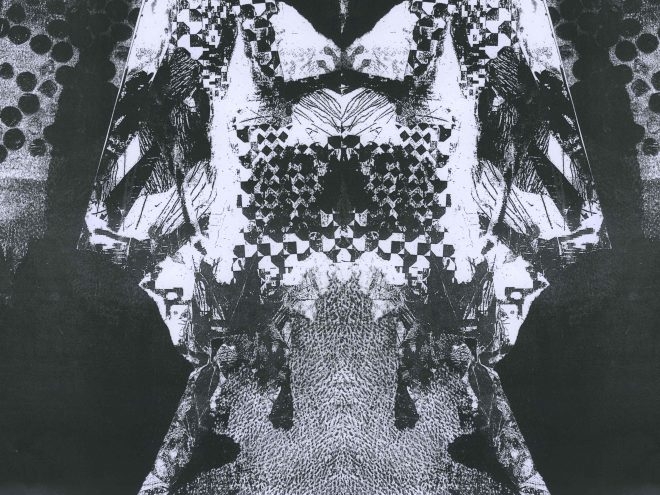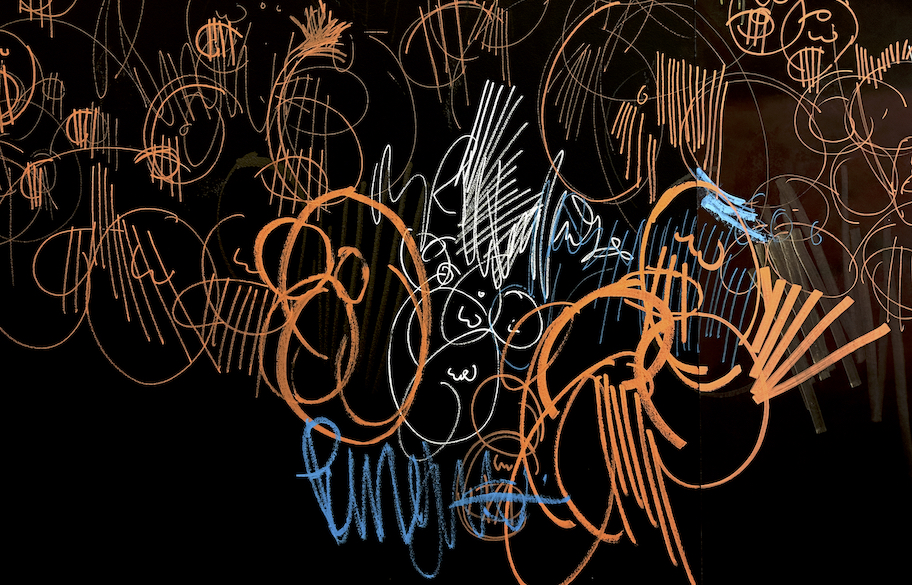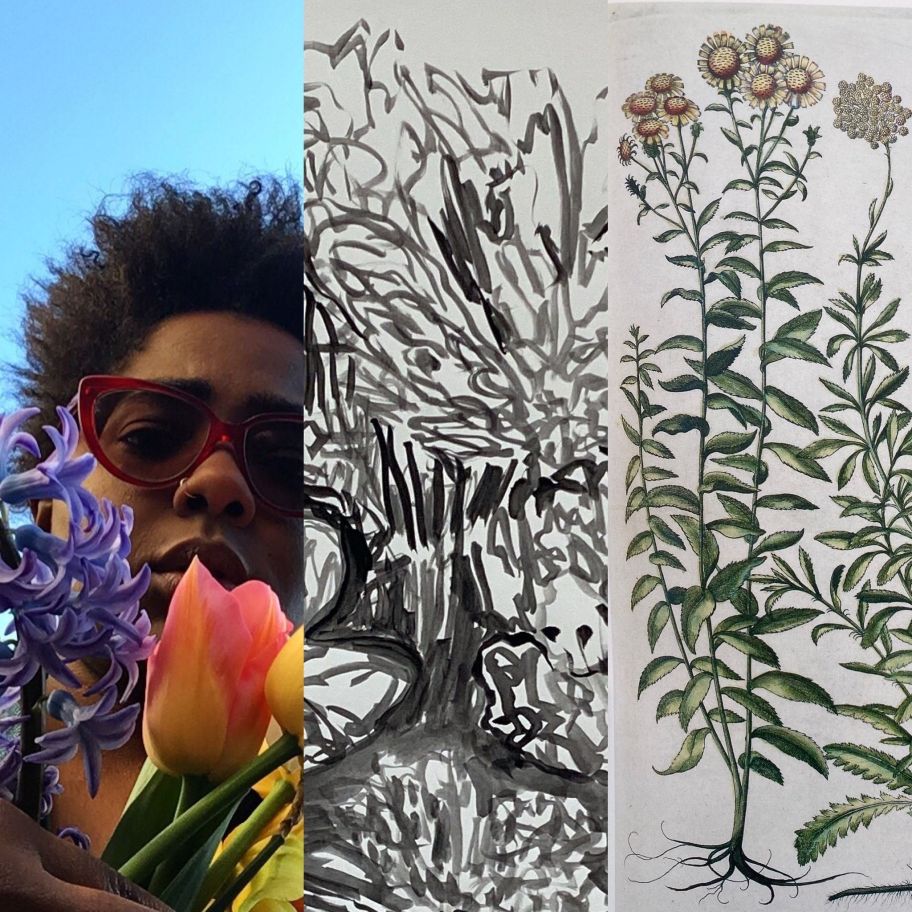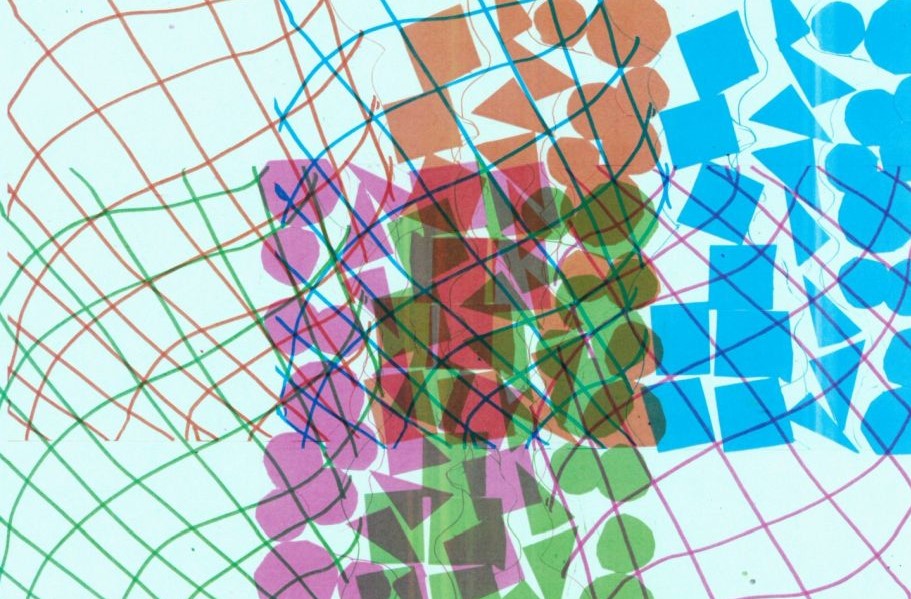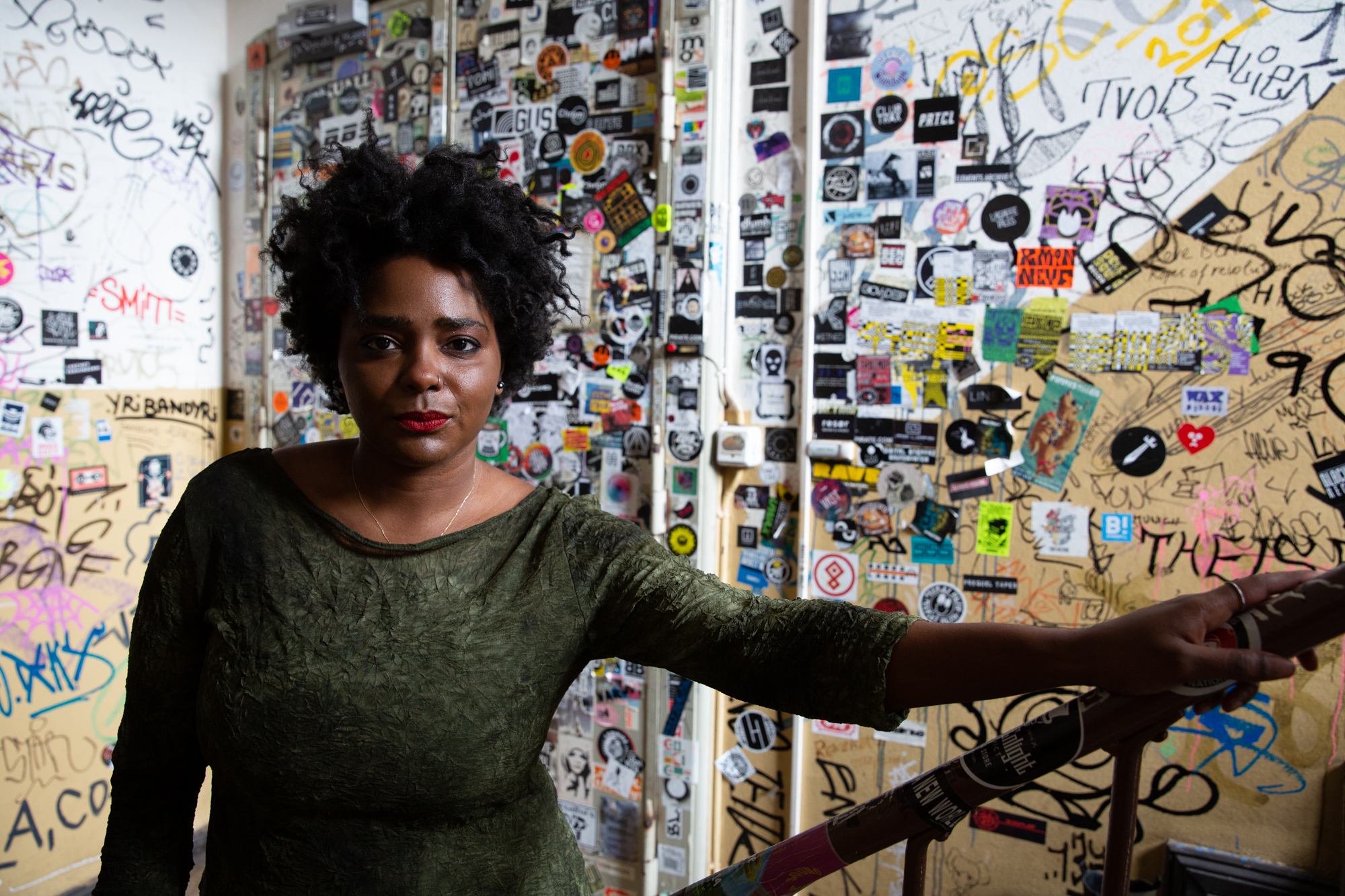USA, Visual Arts, 2023
Sam
Vernon
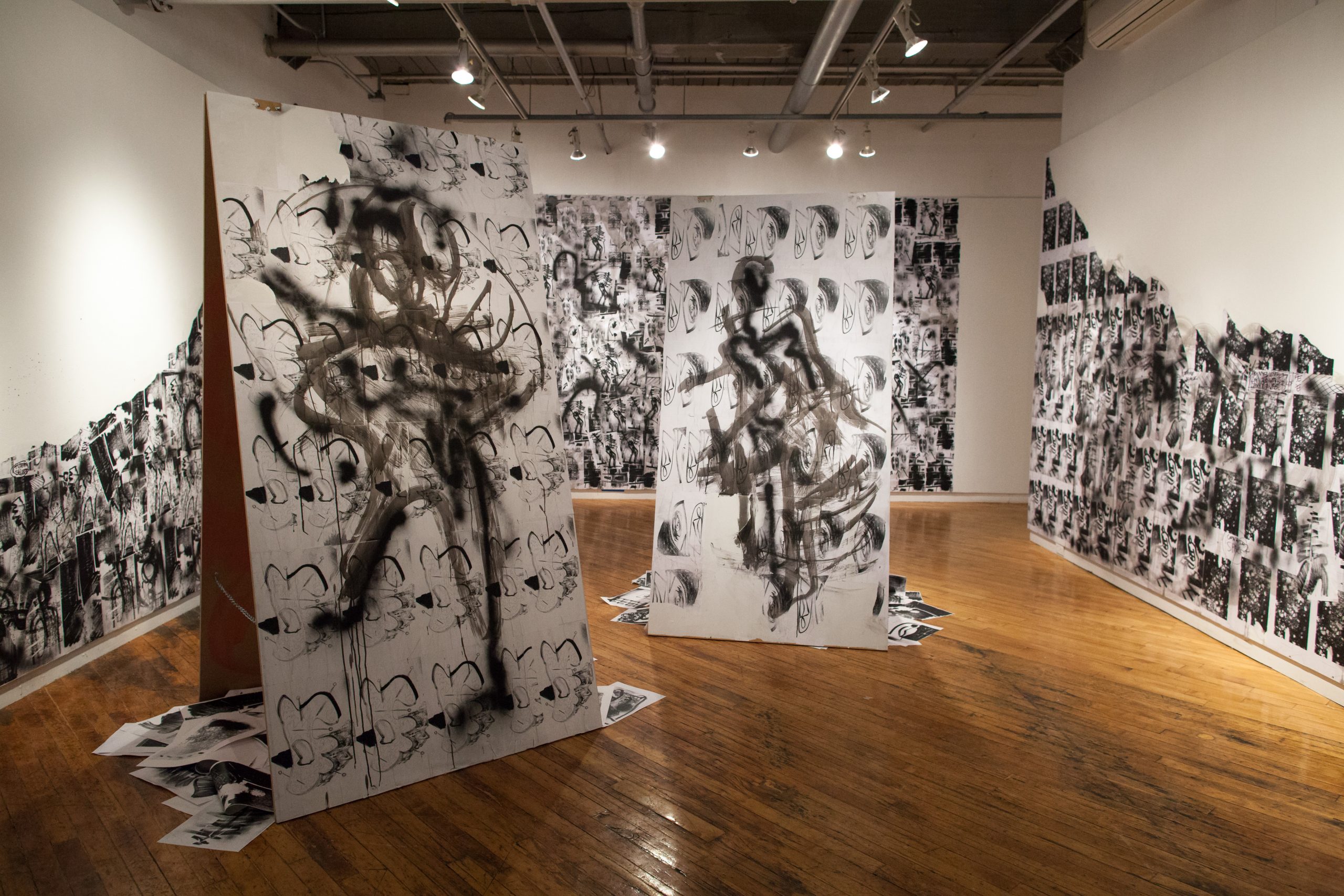
Sam Vernon is a poet of the repeated image. She/they continuously print, xerox, draw, and rework photographs, drawings, and paintings into new installations and objects that range in scale from relatively contained individual works to enormous wall installations and public artwork. Their imagery ranges from the historical to personal, all filtered through Vernon’s hand as they draw, scan, and compose.
Vernon often talks about ghosts in their work, connecting process and an aesthetic ethos. Repetition implies a haunting, the unfinished business of echoes that emerge and recede from view. Printmakers make ghosts from the residue of already-printed images. For Vernon, ghosts are the origin and the source: they do not let us forget where we come from, and they show us where we are.
In How Ghosts Sleep (2014), Vernon visualizes these shadows in combination with prints from textiles and masks. The work references Afro Deco as readily as the Southern Gothic of Toni Morrison’s Beloved, suggesting the emotional residue accumulated in wallpapers used to adorn a home. Louis & Sam (2016), shown at the Queens Museum, has Vernon retroactively collaborating with Louis Armstrong, himself a prodigious collagist, to create sprawling colorful prints over a vast wall in the museum’s atrium. Vernon’s installations become their own environments, landscapes created by clustering and dispersing information.
These ghosts concern the present, too. Vernon’s 2021 show, Future Shock, borrows a title from Alvin Toffler and Adelaide Farrell’s 1970 publication, famous for describing a future society immobilized from too much technological change in too little time. The exhibition, including imagery of predominantly black subjects, from present-day newspapers, old issues of Jet magazine, and Vernon’s personal archive, points to the paralysis of a present saturated by technology and news, where accounts of racism and violence are transmitted uninterruptedly. It also emphasizes a critical subtext within Vernon’s work, that of our relationship to representations.
Is there a representation that does not haunt its subject, especially if it is taken as an endpoint, even more so if it is imposed? The abstract and unsettled impact of Vernon’s work asks viewers to question representations that appear stable and complete, making room for a single image to become unknowable as it proliferates. Abstraction generates identity play, particularly in relationship to blackness and gender, and repetition becomes the means by which images rebel against their purported purpose, to disclose who or what someone is.
In a 2018 lecture at Utah State University, Vernon screens clips from a Facebook live they did a year earlier demonstrating their process of drawing and xeroxing, starting with a self-portrait inspired by Kerry James Marshall’s Portrait of the Artist as A Shadow of His Former Self. For a few minutes, both Vernons talk at once: on Facebook, holding up the graphite drawing and its xeroxed shadows; and in Utah, remarking on the generosity of reproduction and reworking along the way, and the vulnerability of being live on social media. All four portraits are undeniably connected yet incompatible with each other, unfolding, alive.
Text: Gaby Collins-Fernandez


